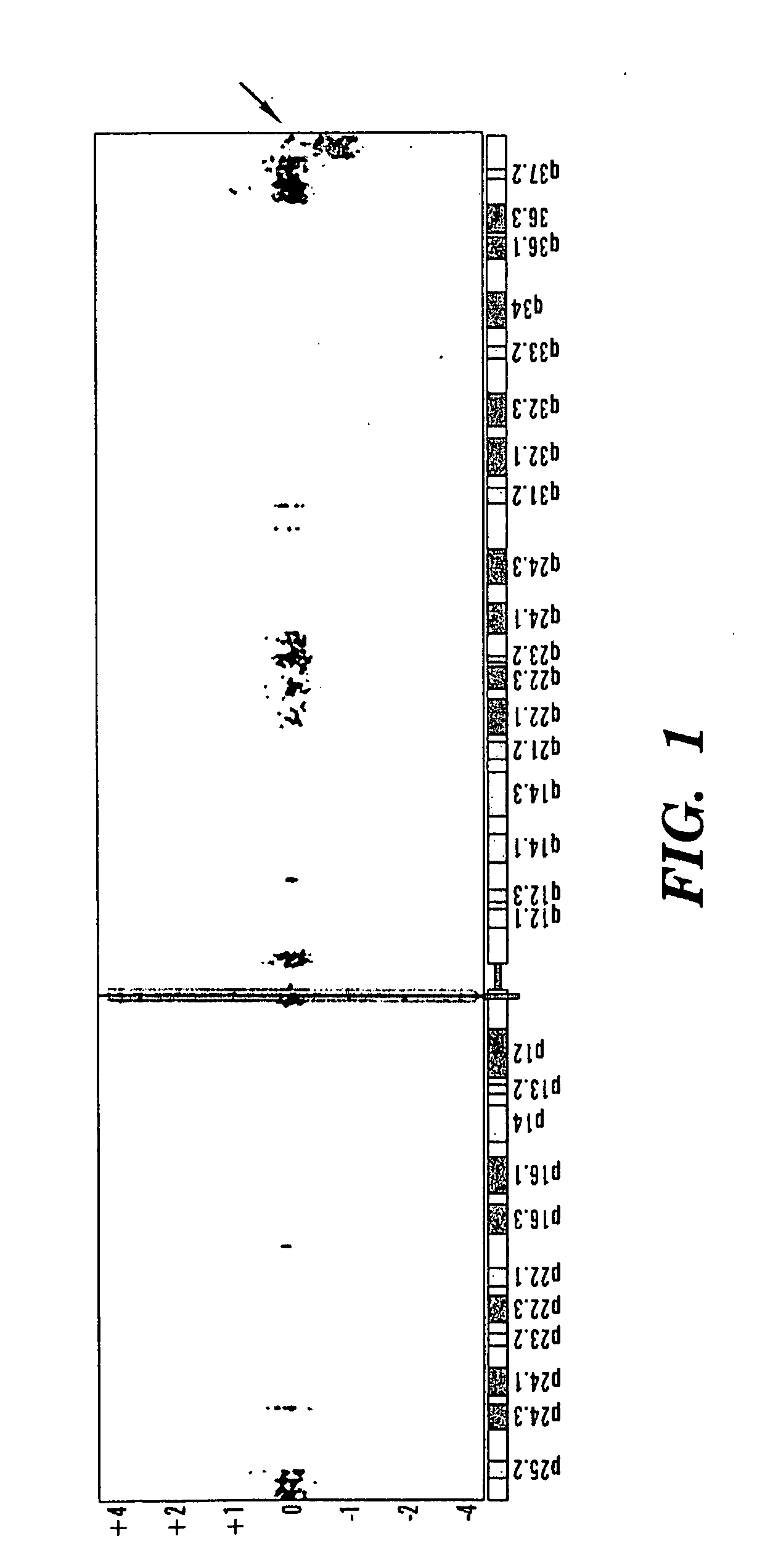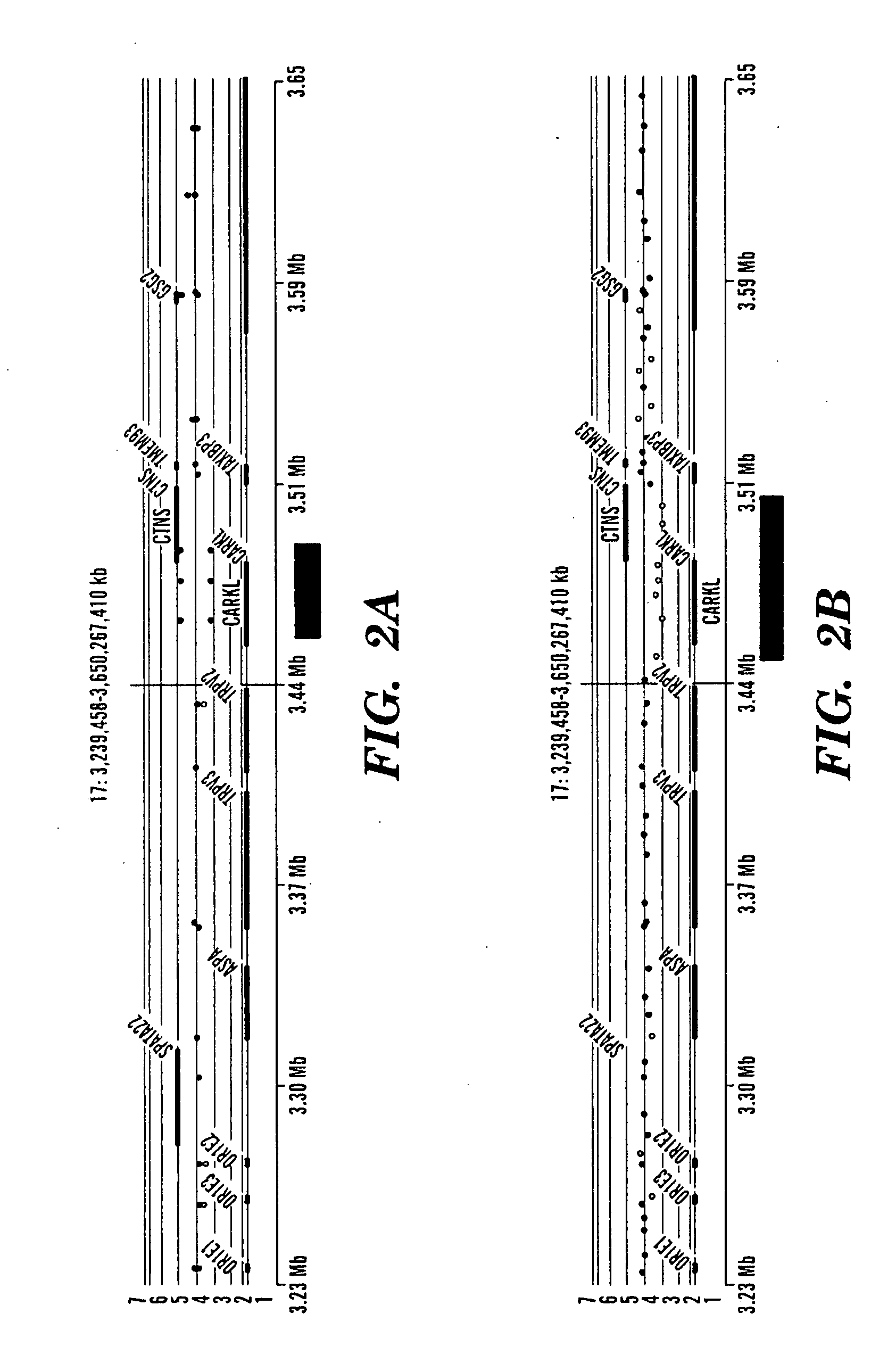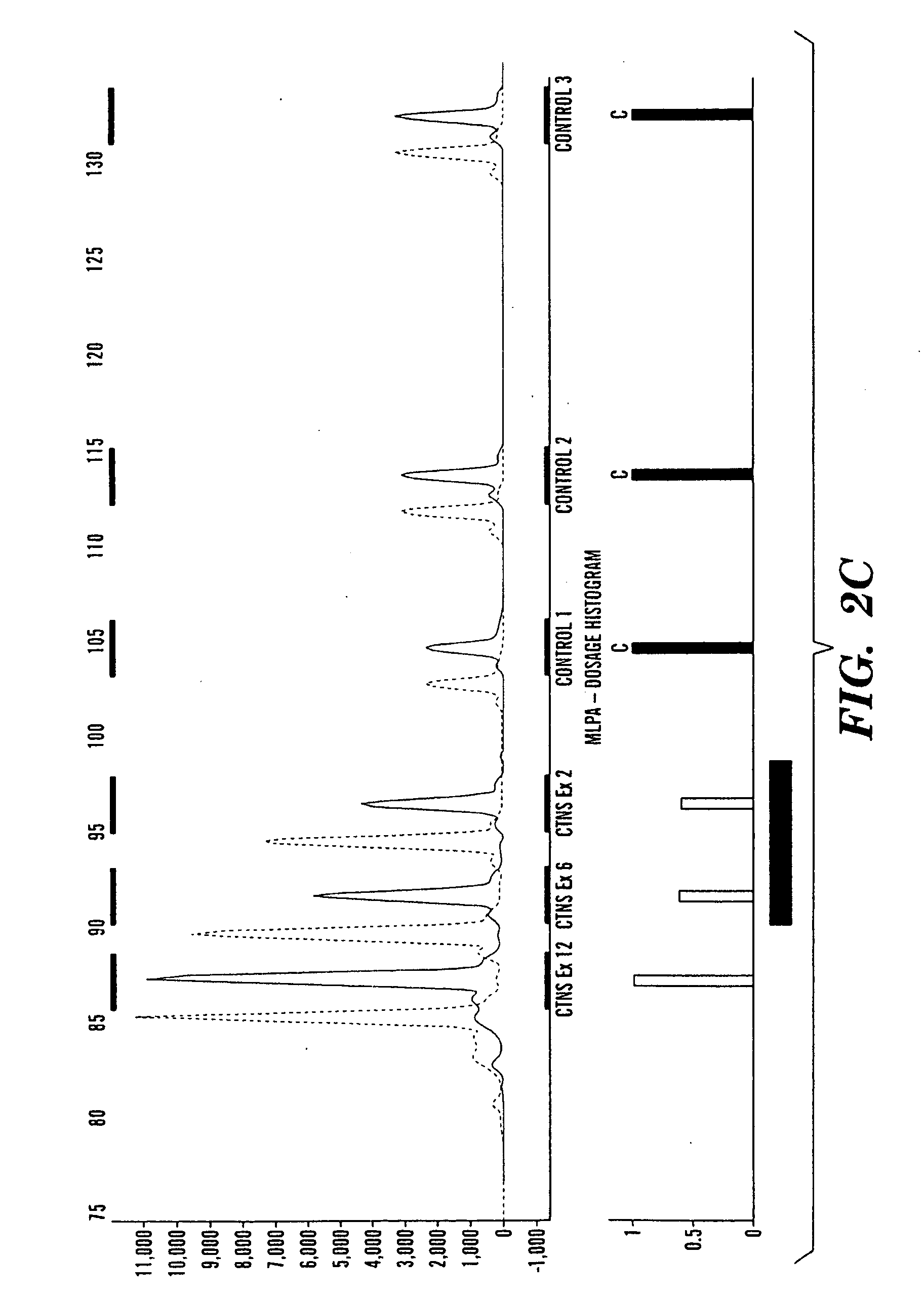Method for diagnosing autism spectrum disorder
a technology for autism and disorder, applied in the field of autism spectrum disorder diagnosis, can solve the problems of no single best treatment package for all children, no method of early diagnosis and/or predictive method, and simple diagnosis method
- Summary
- Abstract
- Description
- Claims
- Application Information
AI Technical Summary
Benefits of technology
Problems solved by technology
Method used
Image
Examples
example 1
Focus Oligonucleotide-Based Array CGH for Clinical Diagnosis
[0178]Genomic imbalance causes a variety of human genetic disorders, ranging from imbalance of entire chromosomes, as in Down syndrome, to submicroscopic rearrangements, as in the 22q11 deletion that causes DiGeorge / velocardiofacial syndrome. Genomic imbalance also causes idiopathic mental retardation (Shaw-Smith C, et. al., 2004, J Med Genet., 41:241-8; Schoumans J, et. al., 2005, J Med Genet., 42: 699-705) and is detectable in approximately 3%-4% of cases (Shevell M, et al., 2003, Neurology, 60:367-80) by traditional cytogenetic methods, such as karyotype and fluorescence in situ hybridization (FISH) analyses (Bejjani and Shaffer, 2006, J Mol Diagn., 8:528-33). These traditional cytogenetic methods are labor intensive, especially when multiple genomic regions are interrogated. genomic copy number of multiple targets (de Vries BB, et al., 2005, Am J Hum Genet, 77:606-16). Microarray-based comparative genomic hybridization ...
example 2
[0207]Autism is a pervasive developmental disorder defined by a neurobehavioral phenotype that includes social disability, communication impairment, repetitive behaviors, and restricted interests.
[0208]The relative genetic contribution to a susceptibility to autism from de novo mutations, rare mutations, and common polymorphisms has been debated extensively (Zhao X, et. al., 2007, Proc Natl Acad Sci USA, 104:12831-12836). Recent whole-genome studies assessing copy-number variation4 reported an excess of large de novo copy-number variants, with such events reported in 7 to 10% of simplex families, 2 to 3% of multiplex families, and only 1% of control families (Szatmari P, et. al., 2007, Nat Genet, 39:319-328; Sebat J, et. al., 2007, Science, 316:445-449). Although these data imply a role for de novo copy-number variation, no recurrent events were identified and implicated as having an unequivocal association with autism.
[0209]We therefore carried out a high-resolution genomewide anal...
example 3
[0258]Recurrent microdeletion or microduplication events are a common cause of developmental delay and mental retardation(Shaw-Smith C, et al., 2004, J Med Genet., 41(4):241-8; Schoumans J, et al., 2005, J Med Genet, 42(9):699-705). Most of these events are mediated by recombination between segmentally duplicated sequences through an established mechanism of non-allelic homologous recombination, or NAHR (Lupski JR. 1998, Trends Genet; 14(10):417-22). Microdeletion or microduplication through intrachromosomal recombination between segmentally duplicated sequences is an established mechanism associated with congenital developmental disorders such as the Smith-Magenis syndrome, the Williams syndrome, the Potocki-Lupski syndrome (17p1 1.2 duplication), and the DiGeorge syndrome (22q11 deletion). The goal of this study is aimed at discovering microdeletion or microduplication that are associated with autism.
Materials and Methods
Children's Hospital Boston Samples
[0259]We performed whole g...
PUM
| Property | Measurement | Unit |
|---|---|---|
| fluorescence in situ hybridization | aaaaa | aaaaa |
| autism spectrum disorder | aaaaa | aaaaa |
| periods of time | aaaaa | aaaaa |
Abstract
Description
Claims
Application Information
 Login to View More
Login to View More - R&D
- Intellectual Property
- Life Sciences
- Materials
- Tech Scout
- Unparalleled Data Quality
- Higher Quality Content
- 60% Fewer Hallucinations
Browse by: Latest US Patents, China's latest patents, Technical Efficacy Thesaurus, Application Domain, Technology Topic, Popular Technical Reports.
© 2025 PatSnap. All rights reserved.Legal|Privacy policy|Modern Slavery Act Transparency Statement|Sitemap|About US| Contact US: help@patsnap.com



